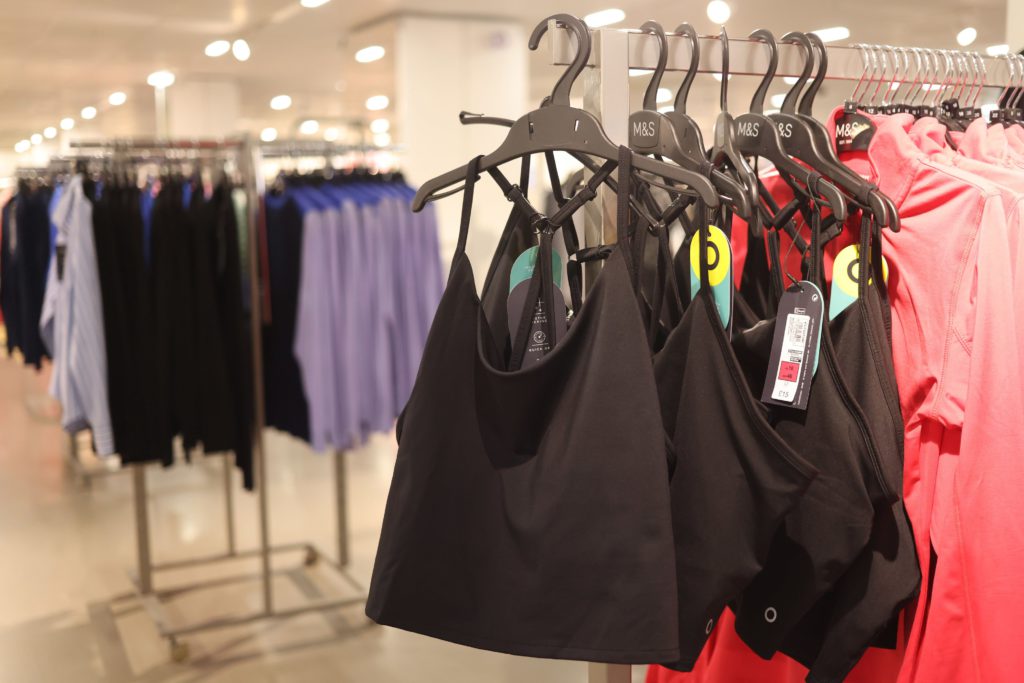(Bloomberg) — The calm aisles of a Marks & Spencer Group Plc store in the City of London illustrate the challenges facing a retailer that has been trying to revive its performance since the turn of the millennium.
On Tuesday afternoon, the large ground floor was packed with colorful womenswear and accessories. There was no shortage of shoes, ranging from £45 ($56.40) black heels ready for the office to beach-friendly flip-flops selling for nearly £13. In the Simply Food hall in the basement, shoppers had their pick of items like ginger and cayenne pepper cordial, Vietnamese style pork belly, wild Canadian scallops and gooseberry and elderflower yogurt.
The one thing in noticeably short supply was shoppers, with only a dozen or so browsing the wares on the ground floor, and there was no line at the checkout counter.
“M&S is nice but because their prices are so expensive I don’t really come here a lot,” said Mark Anthoneil, a London bus driver who popped into the Moorgate store to pick up a sandwich and his favorite sweets. “Every now and then I do come in because they’ve got nice stuff.”
Marks & Spencer warned on Wednesday that earnings won’t rise as sales growth is held back by the U.K.’s cost-of-living crisis and other factors. Though last year produced the fastest sales growth in at least a decade and business so far this year has been strong, the downbeat forecast presents a challenge to new Chief Executive Officer Stuart Machin and co-CEO Katie Bickerstaffe as they take over from Steve Rowe.
The stock was littled changed in London, having lost about two-thirds of its value under the outgoing CEO.
“People talked about the fact our store estate was an albatross around our necks,” the CEO said on a call with reporters. “In actual fact, it gives us a platform for a really strong omnichannel business, and it’s the reverse, it’s going to be one of the strengths of the new digital business the team will deliver over the next few years.”
As inflation continues to rise, shoppers will have to choose between M&S’s premium offerings and its more budget items, which are still more expensive than the likes of value retailer Primark. In April M&S announced lower prices on its Remarksable value range including bread, milk and ground beef, seeking to focus the customer on a full-basket shop rather than just eye-catching items.
Amid the cost-of-living squeeze, Anthoneil said he won’t do his main weekly shop in the store but will limit purchases to the items he really likes.
Marks & Spencer’s food business, which sits alongside the clothing and home operation in the retailer’s portfolio, has done better. Specializing in ready meals and sandwiches, it weathered the pandemic and now benefits from return-to-office trends.
“I think they will try to turn it into a predominantly food business with a smaller clothing offer on the side,” said Tony Shiret, an analyst at Panmure Gordon.
Even the food business faces challenges, though. Ocado Group Plc warned Wednesday that growth at its home-delivery joint venture with M&S will be below expectations this year as the cost-of-living crisis hits home.
As shoppers scale back online shopping and return to stores, the problem for M&S remains that too few of those shoppers are choosing its shops.
More stories like this are available on bloomberg.com
©2022 Bloomberg L.P.











